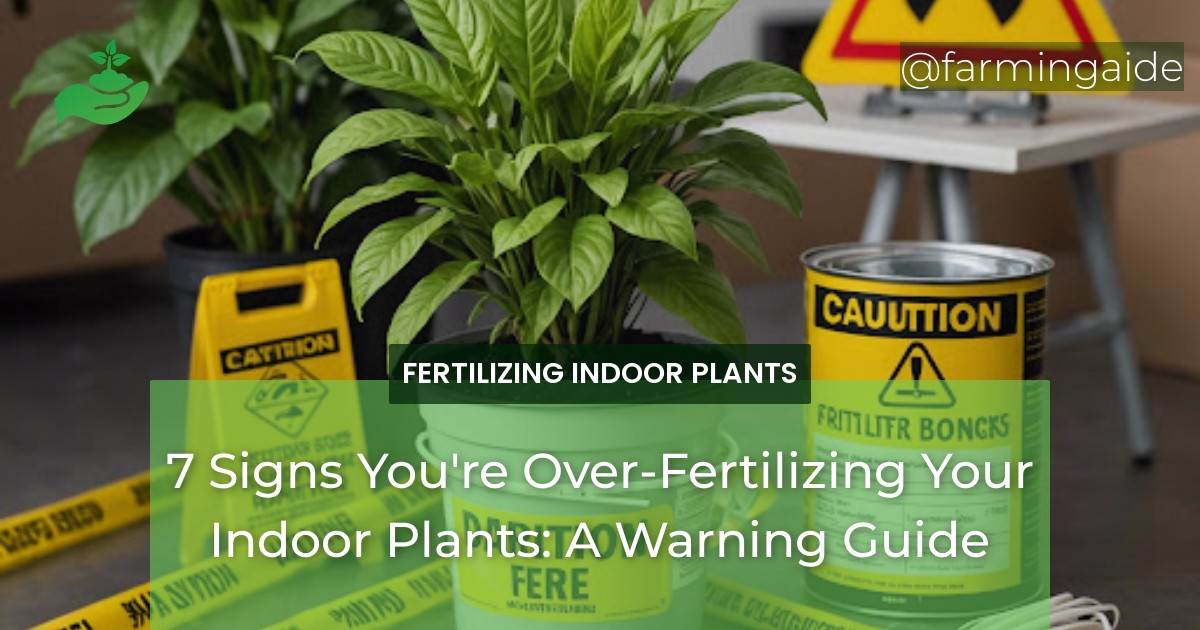As an indoor plant enthusiast, you want to provide the best possible care for your beloved plants. Fertilization is an essential part of plant care, but over-fertilization can be detrimental to your plants’ health. In this article, we’ll explore the dangers of over-fertilization, recognize the signs, and provide guidance on how to prevent it.
Key Takeaways
- Over-fertilization can cause more harm than good to your indoor plants.
- Recognizing the signs of over-fertilization is crucial for timely intervention.
- Proper fertilization techniques and monitoring plant health are key to preventing over-fertilization.
- Choosing the right fertilizer and understanding plant nutrition are essential for healthy plant growth.
- Regular monitoring and adjustments can help prevent over-fertilization and promote healthy plant growth.
Introduction to Over-Fertilization
Over-fertilization occurs when plants receive more nutrients than they can absorb, leading to a buildup of toxic substances in the soil. This can cause a range of problems, from stunted growth to root burn and even plant death. It’s essential to understand the dangers of over-fertilization and recognize the signs to take corrective action.
Understanding Plant Nutrition
Plants require a balanced diet of nutrients to thrive. The three primary macronutrients are nitrogen (N), phosphorus (P), and potassium (K). Micronutrients like iron, zinc, and copper are also essential. Fertilizers provide these essential nutrients, but over-fertilization can disrupt this delicate balance.
A well-balanced fertilizer should contain the ideal ratio of N-P-K, usually 20-20-20 or 10-10-10. However, it’s crucial to choose a fertilizer suitable for your plants’ specific needs and growth stage.
The Dangers of Over-Fertilization
Over-fertilization can cause a range of problems, including:
Recognizing the Signs of Over-Fertilization
Early detection is crucial to prevent further damage. Keep an eye out for these signs:
ALSO READ
Leaf Discoloration and Drop
Over-fertilization can cause leaves to turn yellow, brown, or wilt, leading to premature drop. If you notice unusual leaf coloration or excessive leaf drop, it may be a sign of over-fertilization.
Check your fertilizer instructions and adjust the dosage or frequency to prevent further damage.
Stunted or Slow Growth
If your plants are not growing as expected or appear stunted, it could be a sign of over-fertilization. Check for other signs like leaf discoloration or root burn.
ALSO READ
Root Burn and Damage
Over-fertilization can cause root burn, leading to damaged or dead roots. Check for signs like soft, mushy, or blackened roots.
Salt Buildup on Soil Surface
Excessive fertilizer salt buildup on the soil surface can cause damage to roots and stems. Remove any salt deposits and adjust your fertilization schedule.
Wilting Despite Sufficient Water
If your plants are wilting despite sufficient water, it could be a sign of over-fertilization. Check for other signs like root burn or leaf discoloration.
Unusual Odors from Soil
Unusual odors from the soil can indicate over-fertilization. Check for signs like ammonia or sulfur smells and adjust your fertilization schedule.
Pest Infestations
Over-fertilization can attract pests like fungus gnats, spider mites, or mealybugs. Monitor your plants regularly for signs of infestation.
Preventing Over-Fertilization
To prevent over-fertilization, follow these guidelines:
Choosing the Right Fertilizer
Choose a fertilizer suitable for your plants’ specific needs and growth stage. Consider organic or balanced fertilizers with a balanced N-P-K ratio.
Proper Fertilization Techniques
Fertilize sparingly, as over-fertilization can cause more harm than good. Start with a small dose and gradually increase as needed.
Monitoring Plant Health Regularly
Regularly inspect your plants for signs of over-fertilization. Monitor plant growth, color, and overall health.
Conclusion: Safeguarding Your Indoor Plants
In conclusion, over-fertilization can have devastating effects on your indoor plants. By recognizing the signs and taking preventative measures, you can ensure your plants thrive. Remember to:
Recap of Key Points
- Understand plant nutrition and choose the right fertilizer.
- Recognize the signs of over-fertilization and take corrective action.
- Fertilize sparingly and monitor plant health regularly.
Encouragement for Plant Care Success
With the right knowledge and precautions, you can provide the best possible care for your indoor plants. By following these guidelines, you’ll be well on your way to becoming a successful indoor plant parent. Happy planting!


